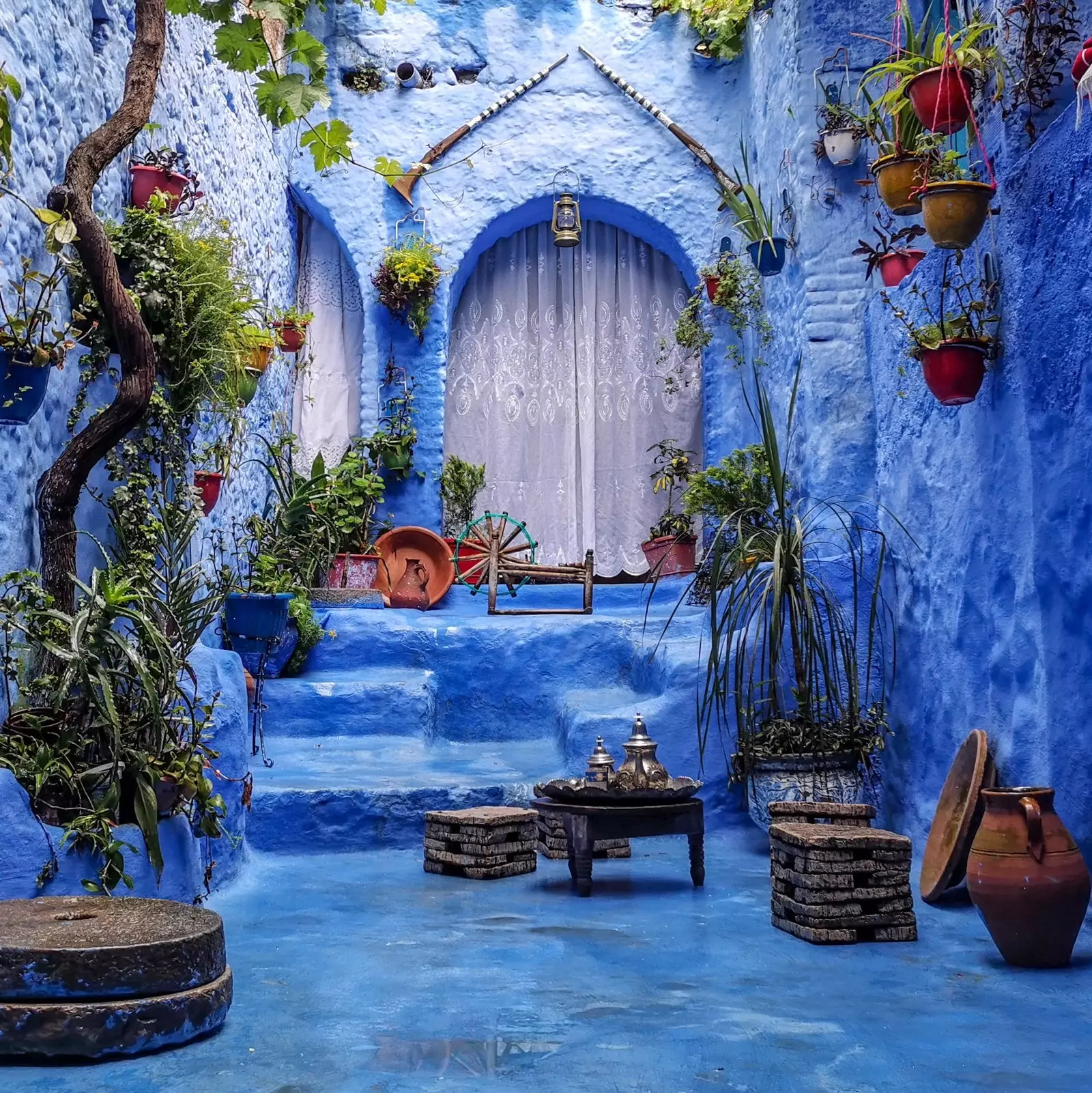
Chefchaouen
Indigo blue, cobalt blue, sky blue, violet blue... In Chefchaouen, a small city in the North of Morocco, all shades of blue intermingle in a combination that is as relaxing as it is photogenic.
Chefchaouen is the perfect place for a short getaway, breathe fresh air while taking a walk in the mountains, lounging in Uta el-Hammam square where all paths converge, but above all, walk through its beautiful medina trying to retain the reflection of each shade of color that has made it famous.
Every year, just before Ramadan, the inhabitants of the small town of Chefchaouen They work hard to clean houses and whitewash facades. is the call Laouacher, a real party in which some 15 tons of white and blue paint are used to paint the houses of the medina resulting in a magical palette of lapis lazuli and turquoise.
No one seems to agree on the reason for blue, for some it is a mere practical matter, since this color repels flies For others, it was the Jews who, starting in 1930, began to paint doors and facades to replace the green color of Islam. Be that as it may, Chefchaouen is today par excellence the “ blue city ", a oasis of calm and tranquility in the foothills of the mountains Ref.
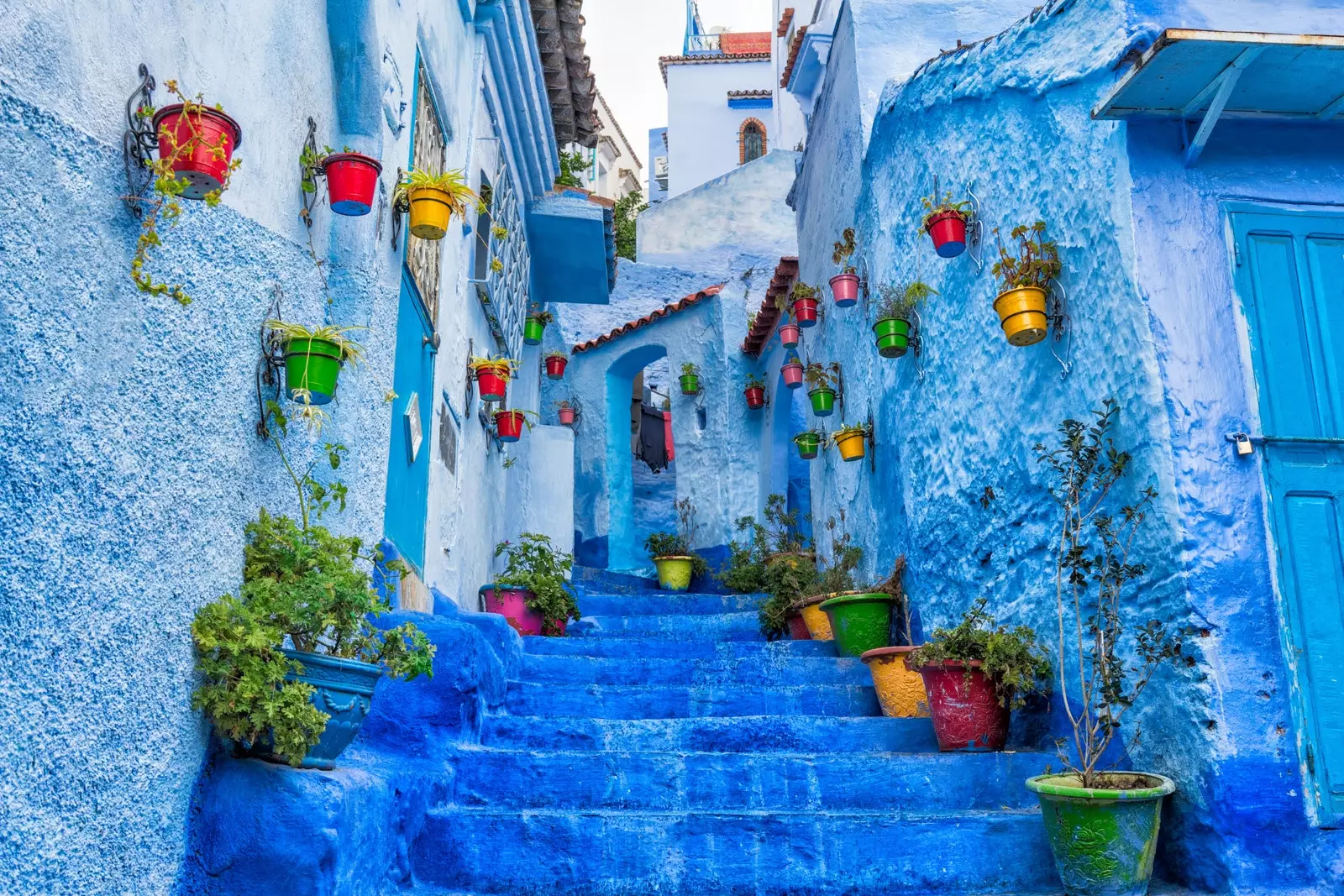
Narrow streets the color of the sea
We enter the network of alleys of the medina and we notice an unimaginable perfect order in the medinas of other Moroccan cities where chaos and permanent agitation reign.
Here every corner, every facade, is a fantastic snapshot that our camera lens captures non-stop: a weaver at work, a door knocker, some children playing with their yo-yo on a light blue background... Andalusian influences are more that evident and it is that during the 15th to 17th centuries many of the Moors and Jews who were expelled from Spain settled here.
Later, Chefchaouen would become part of the Spanish protectorate over northern Morocco. It is not surprising, then, that Spanish is spoken with amazing ease and that its inhabitants prefer Spanish to the more frequent French in other parts of Morocco. “ I always watch Spanish TV ”-says a lady with an impeccable accent.
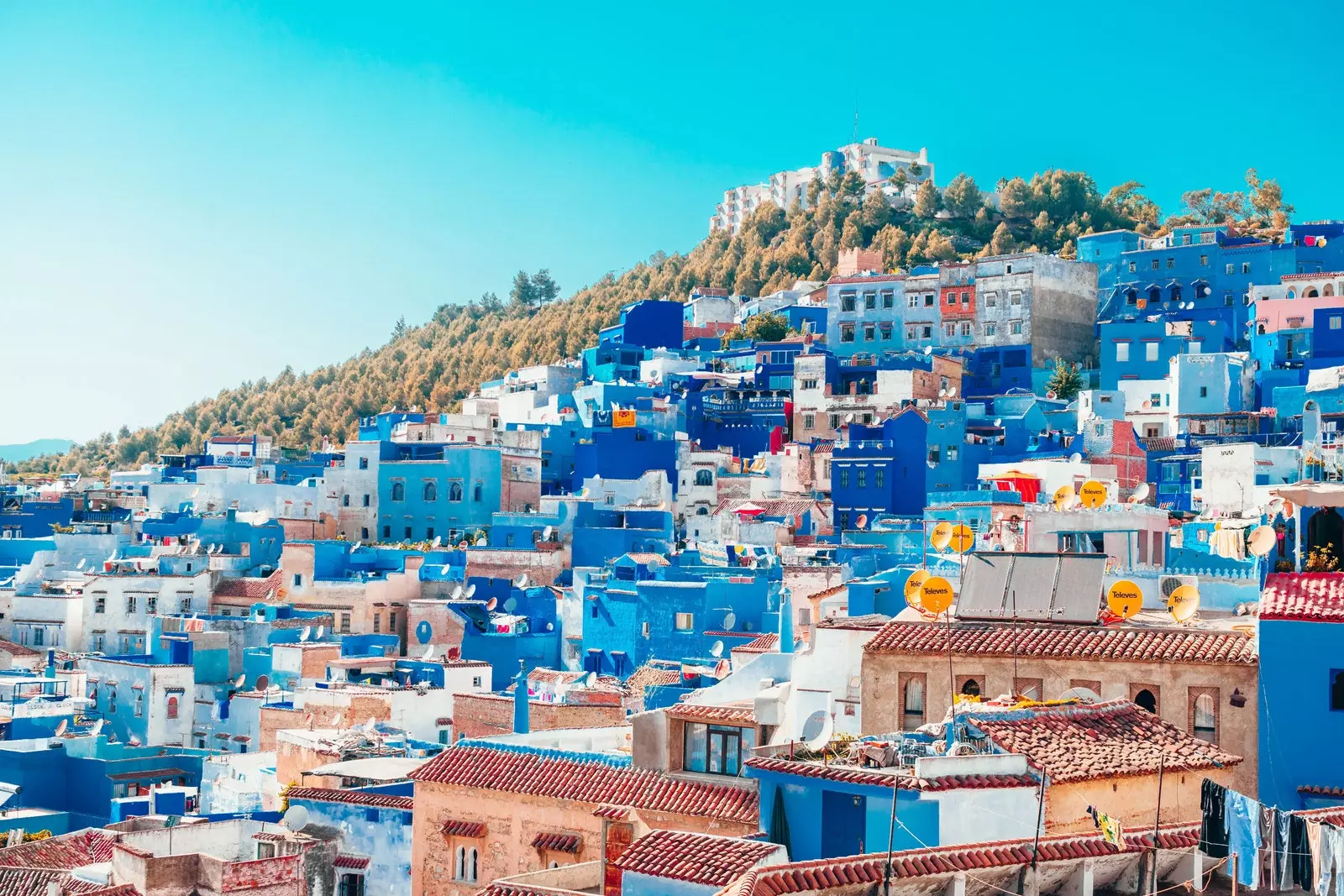
Indigo blue, cobalt blue, sky blue, violet blue...
In Chefchaouen, people are friendly, but the open smile and warm displays of hospitality so common in other parts of Morocco are missing. Someone explains to me that until the entry of the Spanish troops in 1920, Chefchaouen was an almost impenetrable city whose access it was vetoed to Christians and foreigners under pain, even, of death. That would explain the reason for the distrust of foreigners with non-foreigners and the shyness of the women who refuse to look me in the eye by looking down at my questions.
When the complex range of blues begins to saturate our pupils, it is time to sit in the square Uta el-Hamam , the true heart of the town, for a mint tea. From any of the cafes that border it we can contemplate the octagonal minaret of the great mosque (access is only allowed to Muslims) and the walls of the citadel . But first, let's take the opportunity to appreciate the wonderful setting with the surrounding valley, the fresh mountain air and the lazy coming and going of passers-by, many of them Spaniards with backpacks on their backs. In the square some locals sound out the possible clientele for the sale of hashish.
Chefchaouen in addition to a haven of peace is also the main center of hashish production in all of Morocco . As a result of the high European demand, it is estimated that between 1993 and 2003 the land for cultivation of this herb tripled with the consequent damage to forest areas. “- Kif, Kif ”- discreetly offers a man to the group of young people sitting at a table in a cafe.
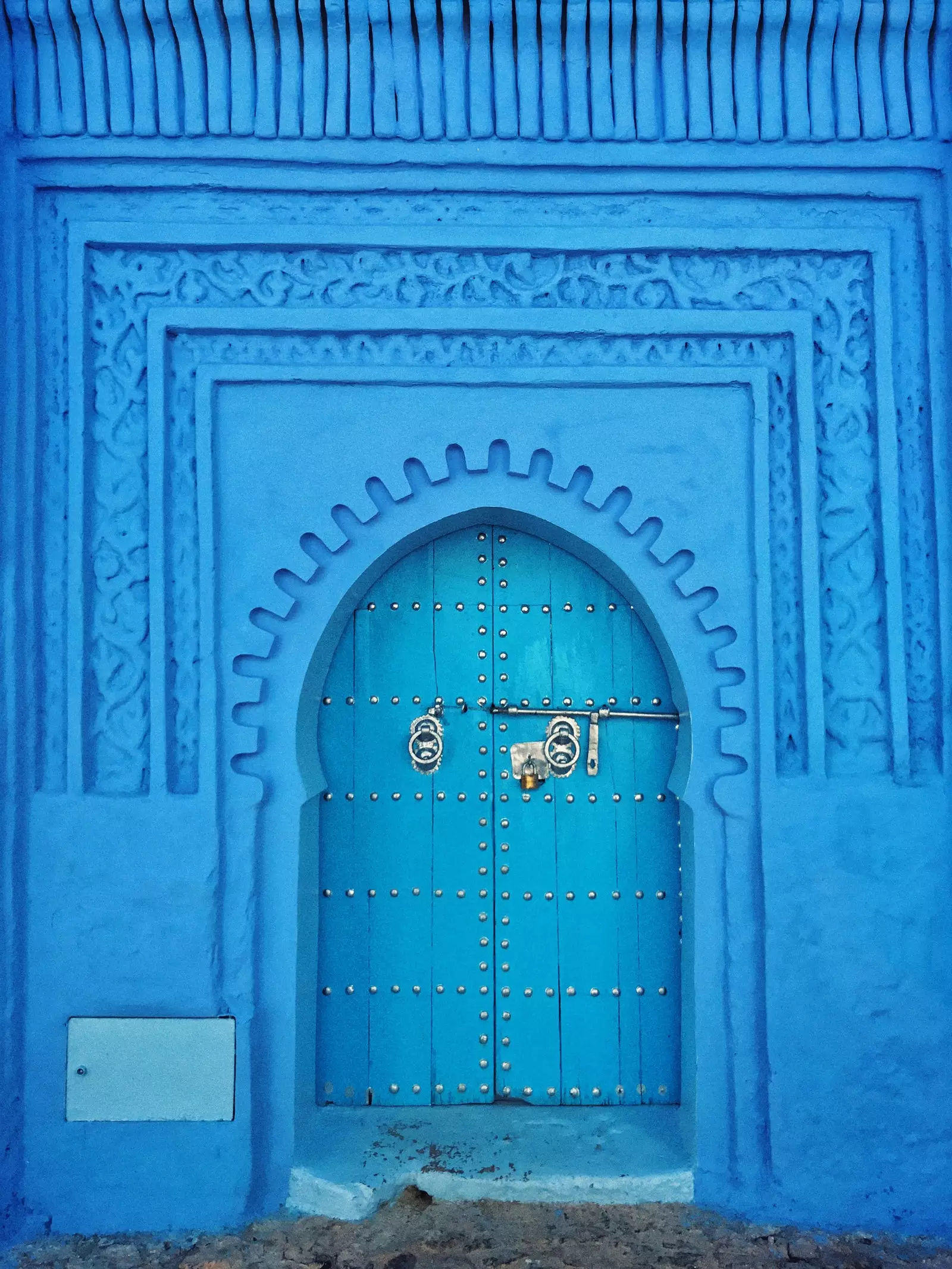
All shades of blue intermingle in a combination that is as relaxing as it is photogenic
the awesome kasbah was built in 1471 by the founder of the city Moulay Ali ibn Rashid . A beautiful garden of palm trees gives us access to the towers from where we will obtain a magnificent view of the city. A modest ethnographic museum and a small art gallery without much interest complete the visit.
Next, we ascend to the highest point of the city right next to one of the seven gates of Chefchaouen, to find Ras-el-Mâa , a spring that supplies the city with drinking water and where every morning the women of the town come to wash their clothes in a joyful hubbub. The chattering of these women is unmissable as they tenaciously rub their garments in the water, while contemplating the collage of blues of the medina.
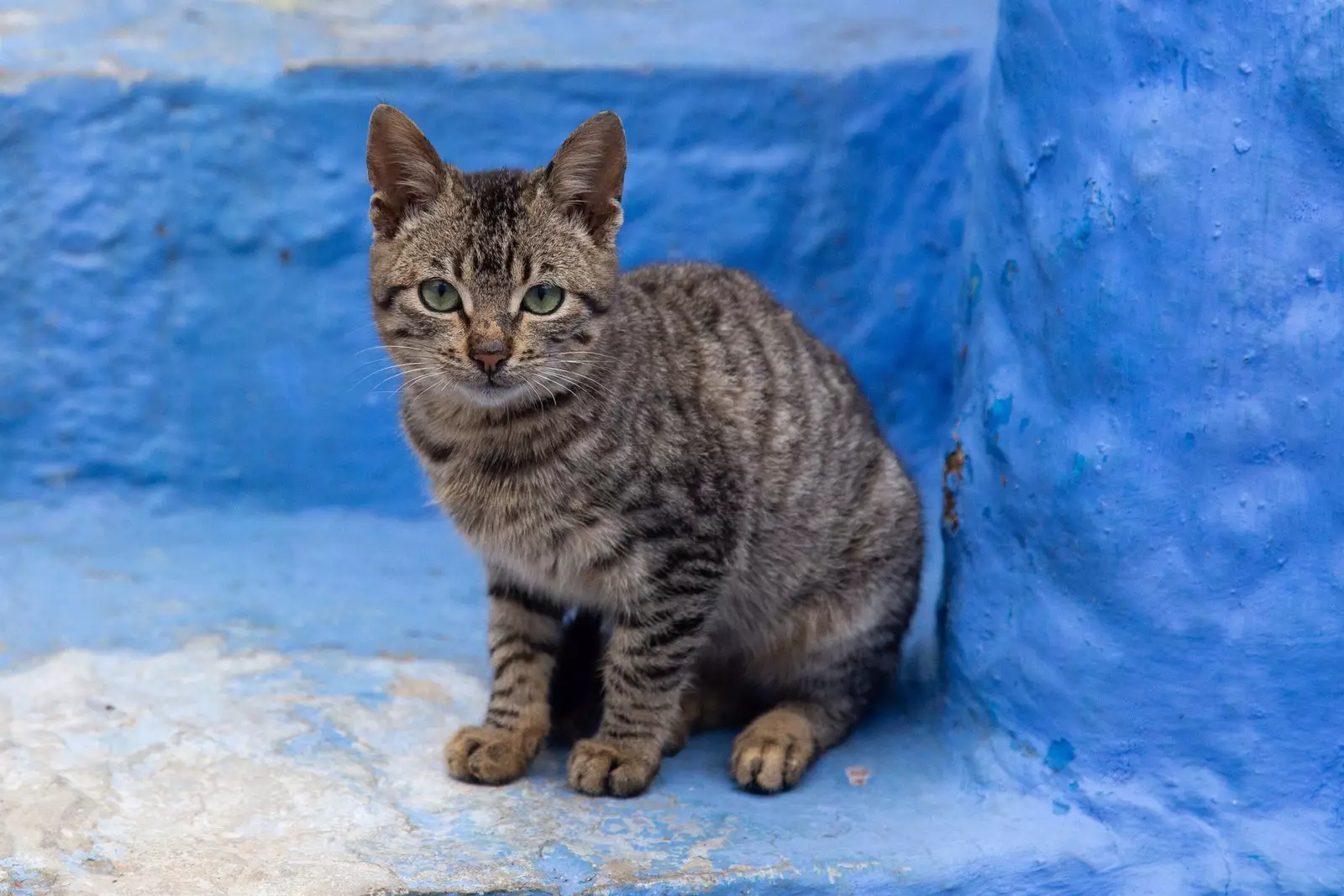
wherever you look: blue
WHERE TO STAY:
We loved it Dar Echchaouen , a small hotel with the charm of a guest house, beautifully decorated in the manner traditional berber . In its restaurant you can taste traditional dishes such as Berber soup, goat yogurt or chicken tagine with olives and candied lemons.
WHERE TO EAT:
Dardara Hostel 10 minutes from Chefchaouen, without a doubt the best restaurant in the area. A delicious and unpretentious cuisine makes it necessary to book in advance if you do not want to miss out on the opportunity to taste some of the wonders on the menu such as the rabbit with quince
The magical lamp overlooking the Uta-el-Hamman square proposes Moroccan specialties with a decoration typical of the One thousand and One Nights . On the terrace of the top floor the views over the city are breathtaking.
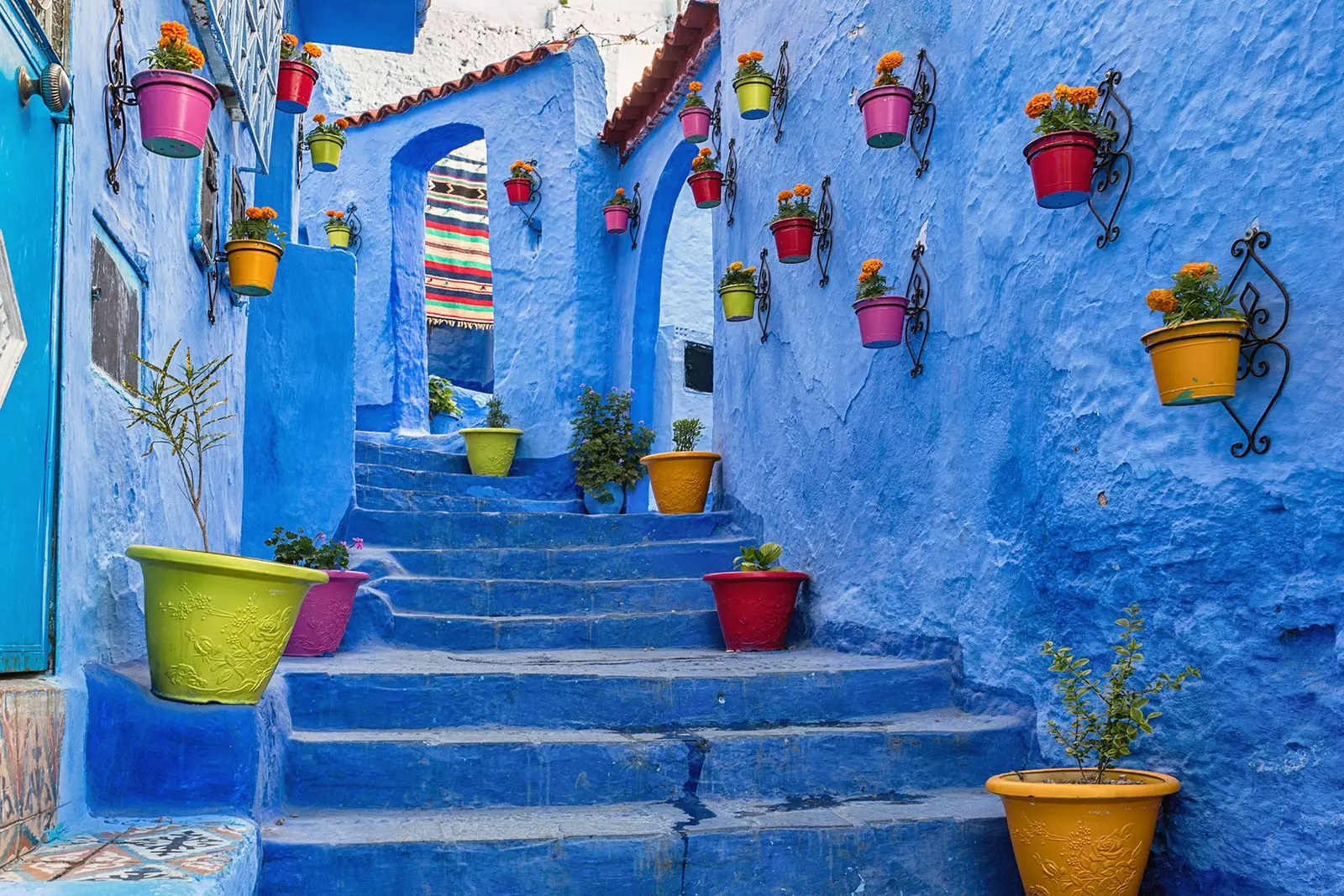
The blue town that has no sea, Chefchaouen, Morocco
